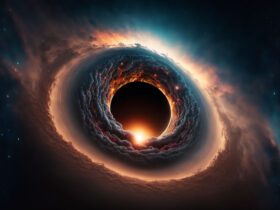A weird X-ray light observed in the skies three years after an incredible collision between two neutron stars is a scientific first.
According to scientists investigating the area of space, the merger may have formed an afterglow from the kilonova blast, which was likely caused by a shock wave from the outburst colliding with dust in the area of space surrounding the explosion.
Conversely, the glow may be caused by material expelled during the explosion clashing with the newly merged entity, which is almost certainly a low mass black hole.
The merging resulted in a kilonova boom, a 1,000-fold stronger burst than a typical nova. The assessment of the light after this explosion showed that neutron star collisions cause gamma-ray bursts; that near-light-speed jets are propelled from the boom; and that heavy metals like gold, platinum, as well as uranium are synthesized in the intense environment created by the event.
As per the team’s calculations, the light is best explained by a relativistic shock caused by the collision’s ejecta exploding into the vacuum of space. This, they claim, is analogous to a sonic boom on Earth: when this matter spreads into the area around the merger, it collides with gas, creating shockwaves that heat the gas and provide the X-ray glow.
If this is true, it implies that the development of a black hole from two neutron stars did not occur rapidly.
The third possibility is that when the black hole was created, the material around it began falling back upon it in the shape of a spinning accretion disk. This circling disk would also release X-rays due to the heat generated by gravity and friction.
If the radio emissions intensify over the following several years, it is most probably a shock wave. If it continues consistently and then dims, it is most likely due to black hole accretion.
The findings were posted on arXiv.















Leave a Reply